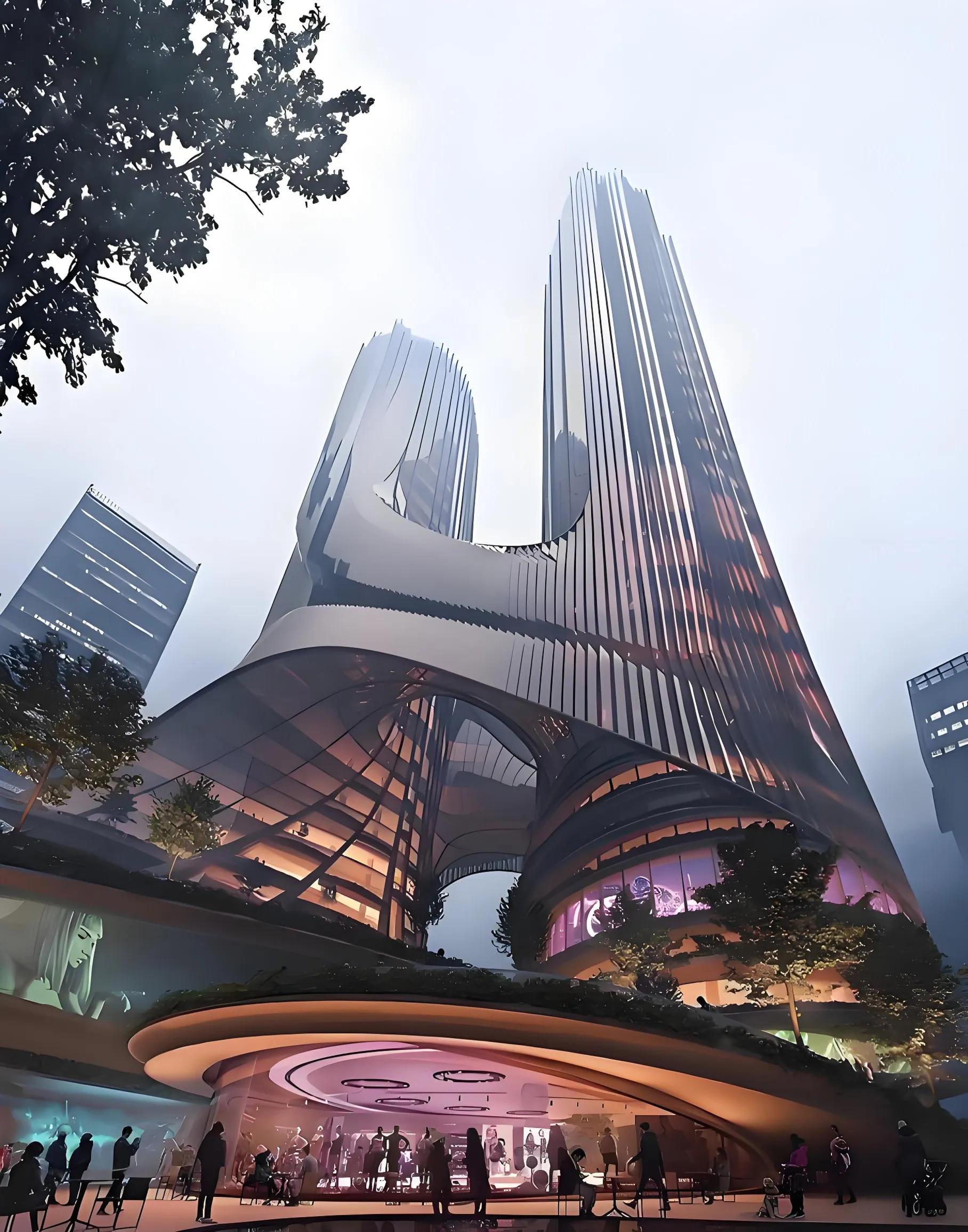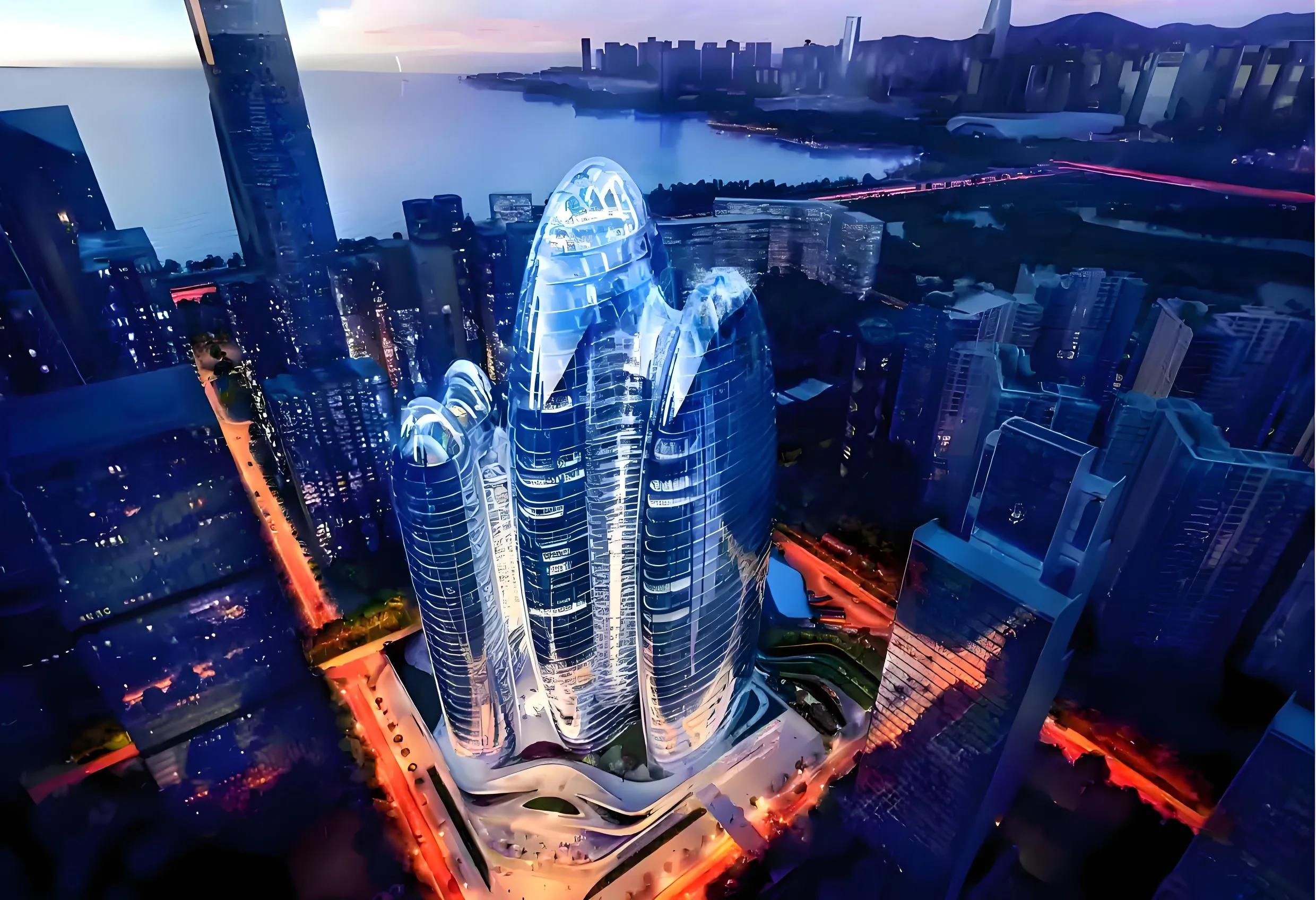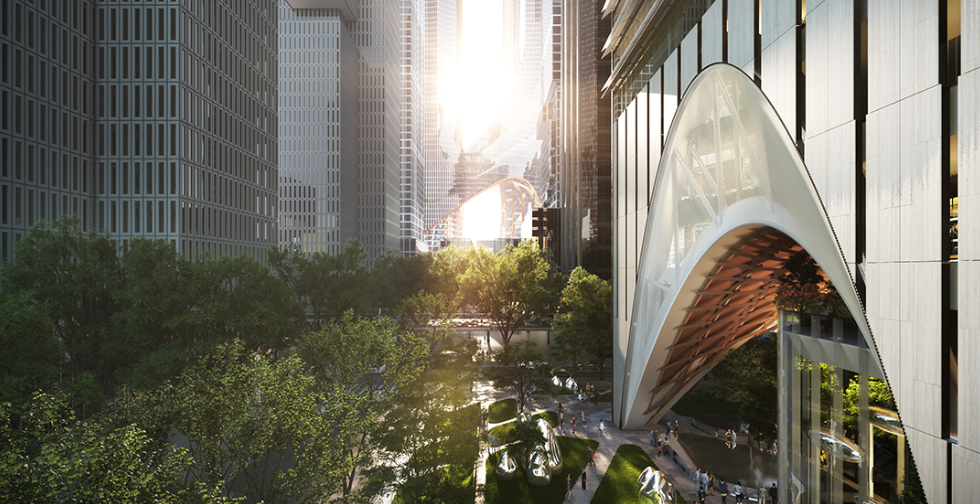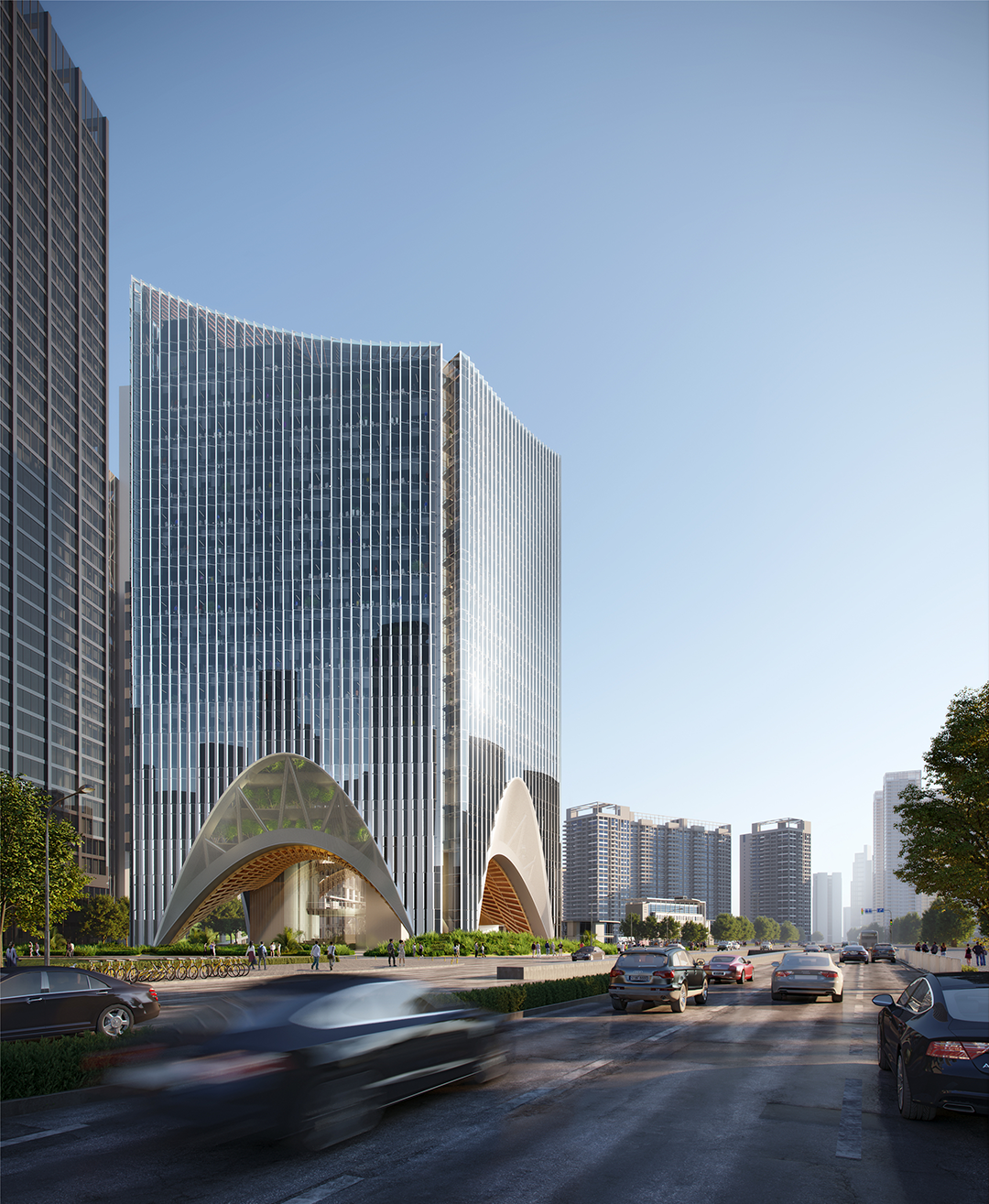As the core landmark cluster of the Guangdong-Hong Kong-Macao Greater Bay Area, the curtain wall design of Shenzhen Bay Super Headquarters Base represents the technical pinnacle and aesthetic breakthrough of contemporary super high-rise buildings.
I. Morphological Innovation: Integration of Deconstructed Nature and Futurism
C Tower (Zaha Hadid Architects)
Its double-curved folded curtain wall, conceptualized as “Two People Dancing Together,” creates dynamic rhythms through 15°-30° curved folds. The design team introduced a “camber limit” grading strategy: the camber is controlled at 5mm for the low zone (below 100 meters) to preserve delicate curves, while to 15-30mm for the middle and high zones to simplify craftsmanship using visual illusions. Ultimately, 95% of the glass was cold-bent, with only 5% requiring heat bending. This “parametric facade optimization” meets the window-wall ratio requirements of Green Building Three-Star certification while maximizing the restoration of Zaha’s fluid design language.
China Merchants Bank Global Headquarters Building (Foster + Partners)
Its diamond-cut hexagonal spatial unit curtain wall (10.5m×4.5m, 5.1 tons) adopts an array of triangular bay windows. 3D modeling ensures each unit’s fold angle accurately corresponds to solar angles, creating a “thousand-facet prism” light effect. At night, embedded LED systems cooperate with glass folds to deliver dynamic light shows, achieving a luminous efficacy of 85lm/W and saving 40% energy compared to traditional floodlighting.
OPPO Global Headquarters (Zaha Hadid Architects)
Its 88,000㎡ double-curved unit curtain wall uses heat-bent glass with a minimum bending radius of 0.4 meters. Parametric design controls the curvature error of each glass panel within ±0.5mm. The “bidirectional bending and torsion” processing accuracy of the supporting keel reaches ±1°, and 3D scanning combined with robotic installation realizes seamless connection of the curved curtain wall.
II. Technological Breakthroughs: Balancing Engineering Feasibility and Performance Optimization
Integration of Structure and Curtain Wall
The 100-meter-span sky bridge of C Tower adopts an “upper support and lower suspension” curtain wall structure. A 105mm displacement compensation joint is reserved to absorb steel structure deformation, while unit panels are integrated into small steel frames to form an independent anti-deformation system. The “V-column track hoisting system” of the China Merchants Bank project uses the main structural columns as hoisting tracks, cooperating with 20-ton winches to achieve millimeter-level positioning of 5.1-ton unit bodies.
Intelligent Construction Technology
C Tower applies the Rhino+Grasshopper platform, integrating wind pressure, geometric data of 50,000 glass panels with finite element analysis to generate displacement cloud maps of 24,000 nodes for guiding joint design. The OPPO project previews the construction process through BIM models, identifying and resolving over 1,200 collision issues and reducing on-site rework rate by 35%.
The curtain wall design of Shenzhen Bay Super Headquarters Base redefines the aesthetic paradigm and engineering boundaries of super high-rise buildings through the in-depth integration of parametric facade optimization, structural performance breakthroughs, intelligent construction technology, and sustainable strategies. From Zaha Hadid’s flowing curves to Foster + Partners’ geometric sculptures, from passive energy saving to energy self-sufficiency, these projects are not only testbeds for technological innovation but also visual declarations of urban spirit and corporate value. In the future, with the further development of materials science and digital technology, the curtain wall skyline of Shenzhen Bay is expected to continue leading the global design trend of super high-rise buildings.



Post time: Nov-03-2025
